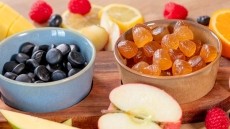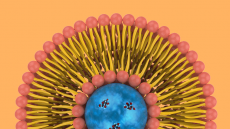Fish and whole grains linked to asthma protection
risk of developing asthma by about 50 per cent, suggests a new
study from The Netherlands.
The International Study on Allergy and Asthma in Childhood 2 (ISAAC-2) looked at dietary intakes for a range of foods, including fish, fruits, vegetables, dairy and whole grain products, for 598 Dutch children aged between 8 and 13.
"Our findings suggest that a high intake of whole grain products and fish may have a protective effect against asthma in children," wrote lead author Cora Tabak in the current issue of the journal Thorax.
According to the European Federation of Allergy and Airway Diseases Patients Association (EFA), over 30m Europeans suffer from asthma, costing Europe €17.7bn every year. The cost due to lost productivity is estimated to be around €9.8bn.
The condition is on the rise in the Western world and the most common long-term condition in the UK today
According to the American Lung Association, almost 20m Americans suffer from asthma. The condition is reported to be responsible for over 14m lost school days in children, while the annual economic cost of asthma is said to be over $16.1bn.
"The rise in the prevalence of asthma in western societies may be related to changed dietary habits," said Tabak.
The researchers, from the Dutch National Institute of Public Health and the Environment, Utrecht University, University Medical Center Groningen, used semi-quantitative food frequency questionnaires completed by the children's parents to assess dietary intakes for a range of food items. Data on asthma and wheezing were also assessed using questionnaires, and also from medical tests.
Tabak and co-workers report that intake of fruits, vegetables, and dairy products were not associated with asthma, a result that is at odds with other studies that supported a link between antioxidant intake, particularly vitamins C and E, to the incidence of asthma.
However, both whole grains and fish were related to asthma incidence, said the researchers. In children with a low intake of both foods, the prevalence of wheezing was almost 20 per cent, but this was significantly less in children with a high intake of both foods (4.2 per cent wheezing prevalence). Low intake of fish and whole grains was also linked to a higher prevalence of current asthma (16.7 per cent) compared to high intake of both foods (2.8 per cent).
After adjusting the results for possible confounding factors, such as the educational level of the mother, and total energy intake, Tabak reports that high intakes of whole grains and fish were associated with a 54 and 66 per cent reduction in the probability of being asthmatic, respectively. The probability of having asthma with bronchial hyperresponsiveness (BHR), defined as having an increased sensitivity to factors that cause narrowing of the airways, was reduced by 72 and 88 per cent when children had a high-intake of whole grains and fish, respectively.
Additional research is needed to further investigate the potential link between fish and whole grain intake, as well as the reason why no relationship between fruit and vegetable intake was observed, in contradiction to other studies.
A study published earlier this year in the journal Chest (Vol. 129, No. 1, pp. 39-49)also reported alink between fish intake and protection against exercise-induced bronchoconstriction (EIB) in asthma sufferers. EIB is a temporary narrowing of the airways that can be triggered by vigorous exercise measured changes in a variety of markers that together appeared to contribute.
The team of researchers, from Indiana and Wales, reported a decrease in the levels of the inflammatory marker leukotriene LTB4, proinflammatory cytokines, and a partial replacement of arachidonic acid (AA) in inflammatory cell membranes.
Source: Thorax>br>Volume 61, Pages 1048-1053, doi:10.1136/thx.2005.043034 "Diet and asthma in Dutch school children (ISAAC-2)" Authors: C. Tabak, A.H. Wijga, G. de Meer, N.A.H Janssen, B. Brunekreef and H.A. Smit











